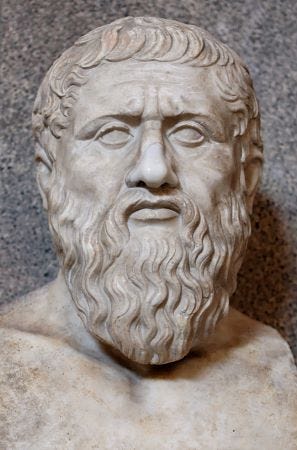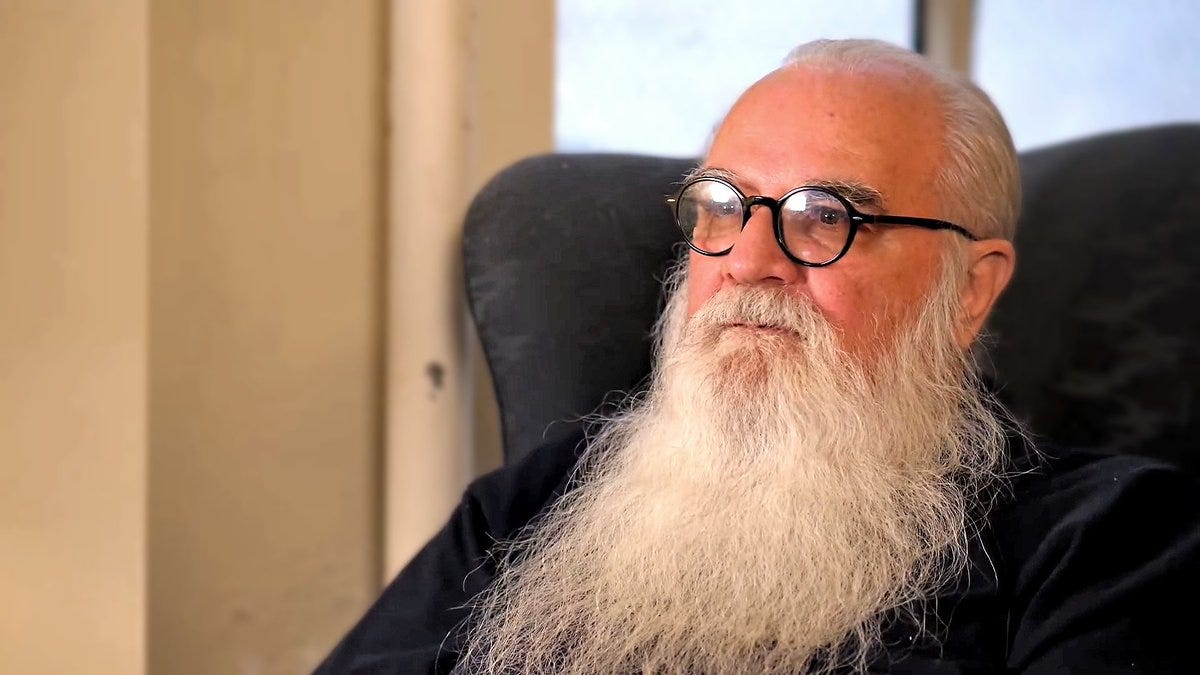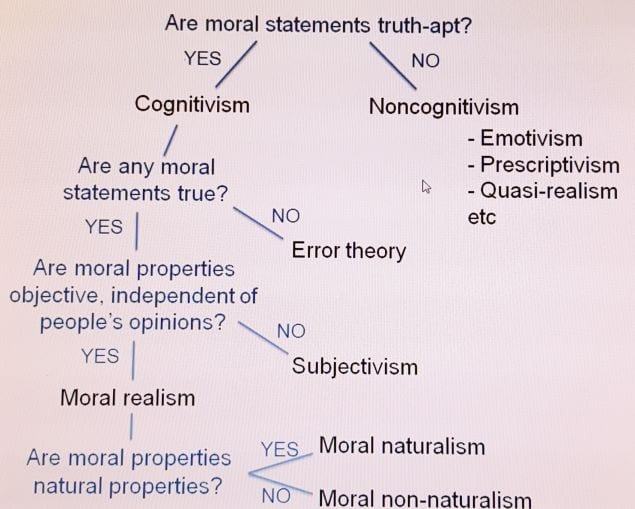Becoming Disillusioned with Cognitivism
Some context for my views on cognitivism in philosophy, mostly within aesthetics and meta-ethics
Before I had confirmed a topic for my MA theses, I had flirted with the idea of looking at two different kinds of evaluation for artworks. Those two systems of thought were Formalism and Moralism. Prior to thinking about this sort of evaluation I was a big fan of George Dickie and Arthur Danto, who propose that what counts as art is whatever is produced or part of the “art world” which is more of a ontological issue than an aesthetic judgment. But this evaluation, that of judgement regarding the qualities of artworks had completely consumed me since I stepped into it at the start of my MA.
I focused on two different figures for each, Formalism I read what William H. Gass had to say, who some might know as the author of ‘The Tunnel’ which is a very dark and interesting post modern novel (apparently).
So a formalist focuses purely on the formal aspects of a work of art. A formalist might say something like “The Triumph of the Wills is a great film!” or “The Birth of a Nation is really well made!” and then provide reasons, given the artwork as to why they think so. Essentially, the moral aspects of the artwork are not taken into account at all. While I can appreciate the attention to formal aspects
The other figure was David Hume, although really I don’t consider him a moralist now. At the time I considered him a sort of soft-moralist where there was in some sense a feeling that art, given whoever was viewing it had good “taste” would be able to evaluate the moral content of an artwork in addition to its formal qualities. He’s not really a hardline moralist, some might call him a soft moralist.
The basis for moralism in art comes from Plato, who also happens to be a strong proponent of mimesis. I think the basis for his moralism regarding the content of art is due to the belief that art is a copy of a copy of reality. It is a further derivation from the realm of forms, the essence of reality. In addition to also being able to stir the emotions. This is an absolute hardline moralist position, he’s not the only one but his reasoning is different from others.
So, how does this bring us to cognitivism?
I could not see the appeal of moralism because the premise was too strong, moral content obviously is not the only thing that we evaluate when we engage with art. This lead me to try and find some other aesthetic theory which didn’t reduce art down to it’s moral content or just it’s formal aspects. At first, I thought something like soft moralism was the best there was going to be until… I discovered cognitivism! Hurrah!
This approach suggests that we learn from art in a whole bunch of ways. Often seen as a sort of psychological approach to art, or even translating art into propositions, generally an approach to art which involves cognitive appraisal thus the name. Sounds better than the other two at least, not turning art into one of two different aspects. This approach felt more holistic to me at the time and so I would have probably even labeled myself one at one point.
Kendall Walton is one very well known aesthetic cognitivist, and his best known paper “Categories of Art” is actually worth reading. I even had to use some of his stuff in my thesis, and he even provided us with the now overused character “Charles” who thinks the evil slime from the blob is really going to attack him.
Out of all the cognitivists, Kendall Walton by far is the most convincing. It’s not just Aestheticians that appreciate his work either, as meta-ethicists and metaphysicians often refer back to his work for the purpose of appropriating his make-believe theory for fictionalism regarding ethics/religion and other shit.
Anyway, Walton was not the focus of my Thesis. A different, far jollier looking cognitivist was my primary focus…
Noel Carroll (Christmas Caroll) — My Nemesis
I went into my MA sort of expecting to agree with some of what Noel Carroll had to say regarding the Philosophy of Horror. Throughout I had one line of attack until I came to the end, then I realised I agreed with absolutely nothing he had to say about anything. It was very disorientating to start off as a cognitivist, research and write most of my thesis and then realise that the entire premise of at least one of the problems I was trying to resolve (The Paradox of Fiction) is just ridiculous.
Stepping back a bit, there were three problems I was meant to resolve in my thesis.
The Definition of Horror
The Paradox of Fiction
The Paradox of Horro
First, this should be pretty self explanatory, it is just how Carroll defines horror. In his case however I have to point out that he has two things called “art-horror” one which is the specific emotion evoked by artworks that are “art-horror” and of course “art-horror” itself which is the object. Crazy to define an emotion by it’s object like this and then call the emotion the same thing as the object. Stupid even.
Carroll completely misdefined horror and turned it into an object oriented genre. One that required a interstitial monster that posed a threat to whoever the protagonists of the film are. It required a mirrored response too, so the characters within the film had to show fear or aversion toward the monster. And because of this, his solution to the third problem only ever resolved why people enjoy monster stories, not horror as an artform more generally.
Second, due to being a cognitvist Carroll has to buy into the Paradox of Fiction. His solution however is convincing, due to it being quite simple. He has a mental image theory, which basically suggests that you will play out a sequence of events in your mind like a film. He gives this example where you are walking near a cliff edge, and the thought of falling off the side flashes in your mind like a movie making you feel fear and walk further from the edge. I find this compelling simply because it is something I can relate to and have done. Similar to being by a bridge and holding onto your phone or wallet extra tight because of the thought of dropping it off the side. Truly terrifying.
Finally, we come to the Paradox of Horror. So again, due to the way he defined horror in the first place the solution that follows cannot actually account for the paradox of horror at all. The solution provided is of course then just resolving why people enjoy monster narratives. His suggestions are that we enjoy these narratives due to the typical structure which is discovery. It doesn’t focus on the emotions evoked at all, the entire reason why anyone engages with horror artworks.
Summary
So my vendetta against cognitivism basically starts with faulty paradoxes like the paradox of fiction. But also that I think specific figures within the movement misunderstand something inherent in artwork and just general human life. I guess it’s some weird thing where cognitivists think you must think before you can feel, but that seems obviously wrong.
As for what the next move is, I’ve already discarded moralism and formalism as useful systems. So, why not look to non-cognitivism? I haven’t decided on a specific kind yet or formulated one so this will have to be further discussed/investigated.
In some sense I think this view (non-cognitivism about aesthetics) has influenced my view of meta-ethics. Within meta-ethical theories cognitivism refers to the truth and falsity of statements regarding ethics. So something like “Murder is wrong” can be evaluated as being true or false. A non-cognitivist therefore does not think moral utterances can be evaluated in this sense, instead moral utterances are just our feelings toward the subject (emotivism) or that moral judgements express judgements which aim to guide behaviour (prescriptivism).
Emotivism also gets the nickname “The Rah!! Boo!!! theory”. Anyway, this is just something I will have to discuss further as to its strengths as a theory, although really it’s more descriptive in terms of peoples behaviour regarding morals.
What next?
I think there’s a lot of things that tie in with aesthetic views, philosophy of emotions, some metaphysics, ethical views, I think generally a lot of the way we view the world comes from art and this is part of why Plato wanted to get rid of art. I think art creates a better understanding of what is possible due to the enlargement of what is conceivable. While something being conceivable doesn’t make it possible, I think for something to be possible it first has to be conceivable.
In some sense art gives us access to others thoughts/imagination and perception and this is to the strength of views espoused by Oscar Wilde reagarding anti-mimesis but also to William James regarding beliefs. Particularly his view regarding a train robbery, for such a thing to be stopped people have to believe it is possible to stop the act. There would be no attempt to act if it is not a conceivable outcome.
I want to explore more of the mimesis and removal of irrationality from post enlightenment philosophy.









Evil Santa
He does look like Santa.